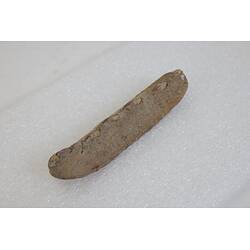General Description
Narrow, flattened oval-shaped body with 8 shell sections (valves) surrounded by a fleshy girdle. The plates (valves) on top of the body are small and most are separated by skin (girdle). Brown to red-brown, or with bands of light and dark colour. Up to 12 cm long.
Biology
This worm-like chiton is known for its small valves, which are embedded in a comparatively large fleshy girdle. The valves are often touching in young individuals, separating as the animal grows older. They can twist their body more than most chitons because of these small, separated plates.
Distribution
Southern Australia.
Habitat
Under rocks, in tidal pools, to below low tide level, to depth of 36 m.
More Information
-
Animal Type
-
Animal SubType
-
Brief Id
Narrow body, narrow valves, valves separated.
-
Colours
Brown, Orange
-
Habitats
-
Diet
Omnivore
-
Diet Categories
Algae, Encrusting Invertebrates
-
Endemicity
-
Commercial
No
-
Conservation Statuses
CITES: Not listed, FFG Threatened List: Not listed, DSE Advisory List: Not listed, IUCN Red List: Not listed
-
Depths
Shore (0-1 m), Shallow (1-30 m)
-
Water Column Locations
On or near seafloor
-
Taxon Name
-
Scientific Author
(Lamarck, 1819)
-
Common Name
Chiton
-
Phylum
-
Class
-
Order
-
Suborder
-
Family
-
Genus
-
Species Name
striata




